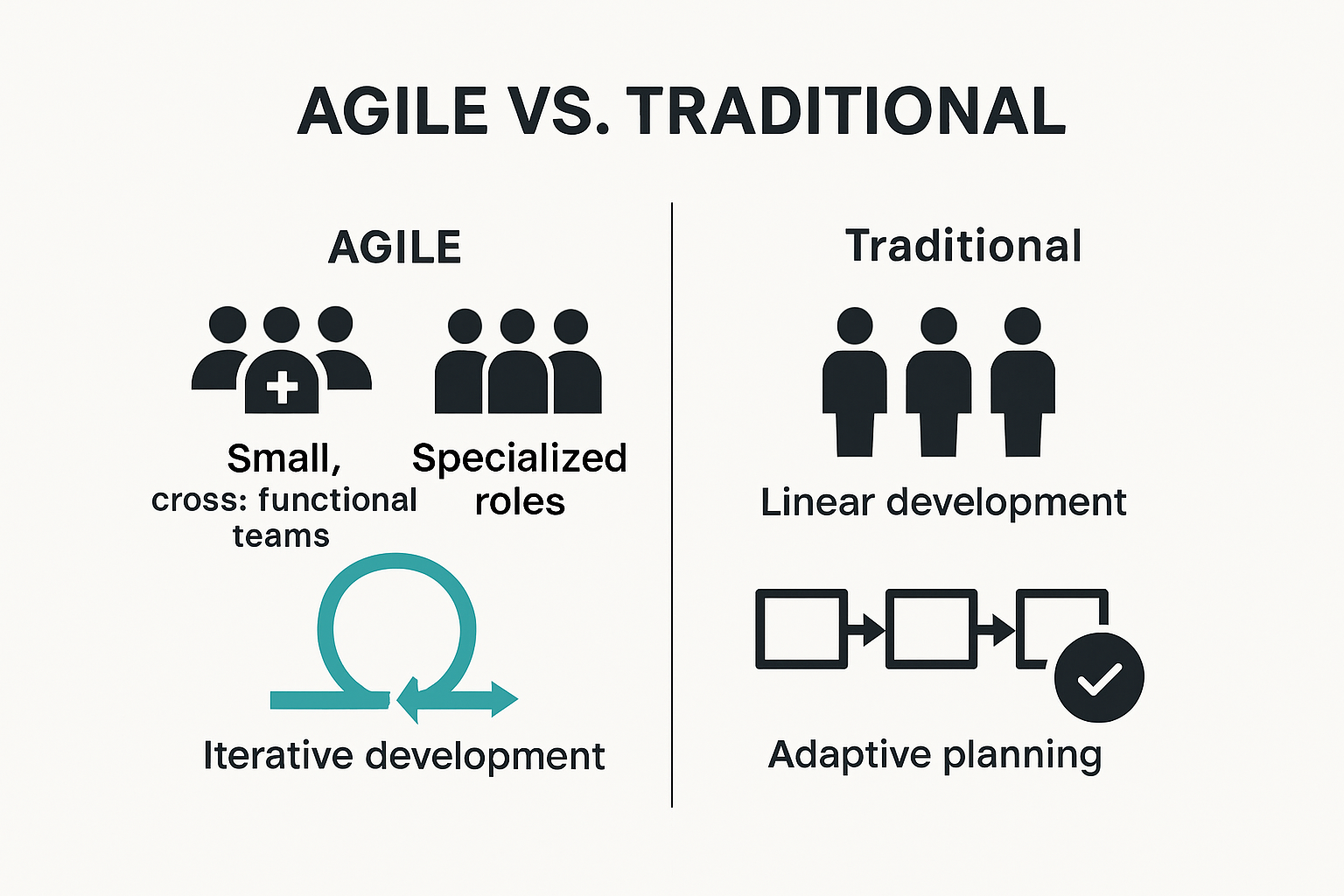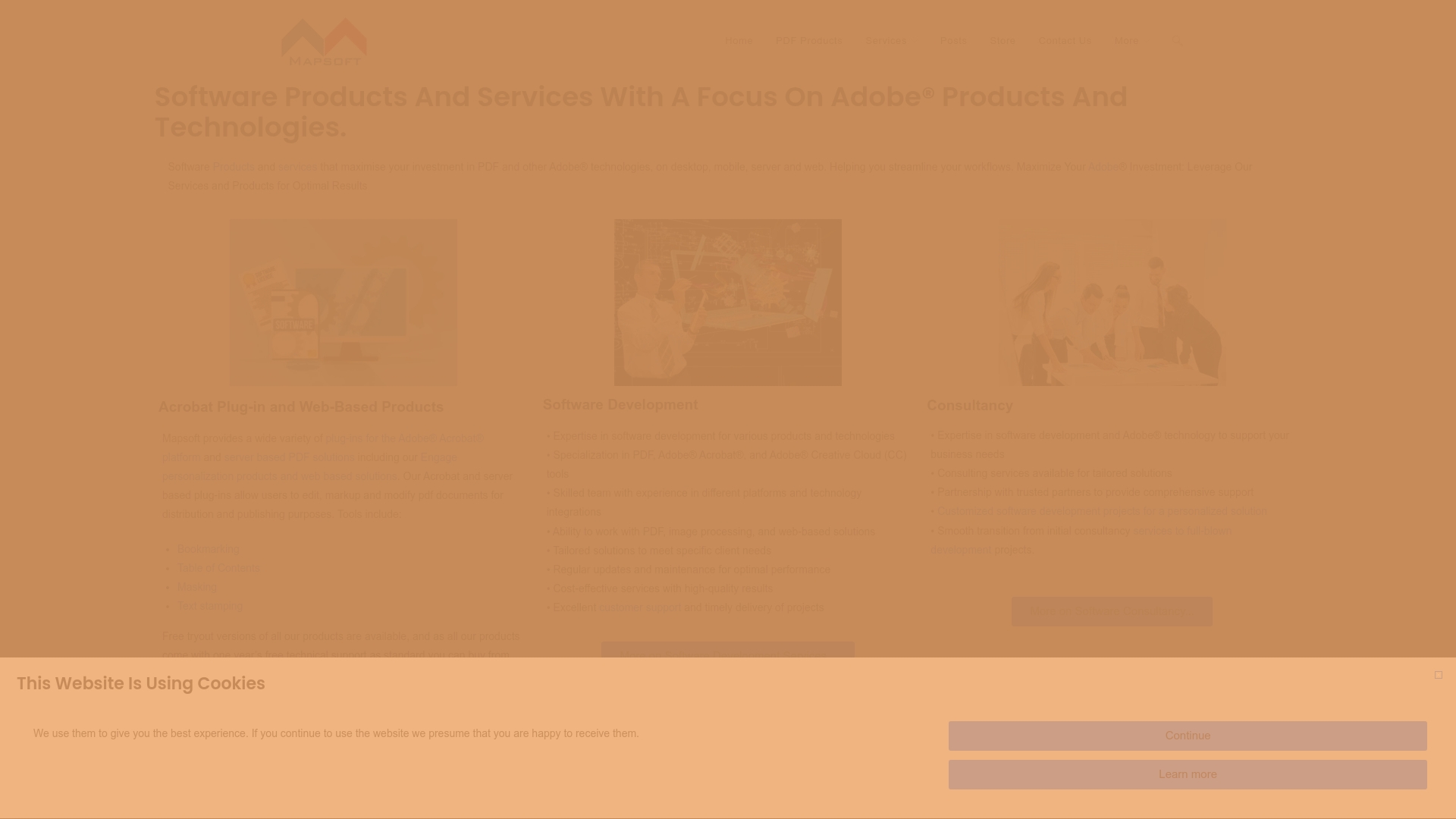Agile project management basics keep making headlines in the corporate world and it is easy to see why when you hear that teams using agile are up to 25 percent more productive and can deliver results 30 to 40 percent faster than traditional methods. Sounds like a magic formula for instant success, right? Yet many enterprise teams get stuck when trying to adopt agile and miss out on its biggest strengths. The real secret is not in the tools or the buzzwords but in transforming habits, mindsets, and the way people actually work together.

Table of Contents
- Key Principles Of Agile Project Management
- Agile Benefits For It And Document Workflows
- Steps To Start Agile In Enterprise Projects
- Tips For Integrating Agile With Adobe Tools
Quick Summary
| Takeaway | Explanation |
|---|---|
| Prioritize collaboration for project success | Agile project management emphasizes teamwork and self-organization, allowing teams to make independent decisions and adapt effectively. |
| Implement iterative development cycles | Break projects into smaller sprints for manageable progress, ensuring continuous delivery and flexibility in addressing changes. |
| Focus on customer feedback | Incorporate regular feedback loops from users to align projects closely with their needs and expectations, enhancing satisfaction. |
| Embrace flexible planning | Develop adaptable project roadmaps that can pivot based on new insights or changing conditions, reducing wasted efforts. |
| Foster a culture of continuous improvement | Encourage teams to regularly assess their processes and outcomes, driving ongoing enhancement and higher quality results. |
Key Principles of Agile Project Management basics
Agile project management represents a dynamic approach to executing complex projects with flexibility and collaborative precision. Understanding its core principles is crucial for enterprise teams seeking to optimize their workflow and deliver exceptional results.
Collaborative Team Dynamics and Continuous Improvement
At the heart of agile project management lies a profound commitment to collaborative team dynamics. Learn more about modern project management strategies that emphasize team empowerment and self-organization. According to the University of Arizona Global Campus, successful agile methodologies prioritize creating environments where teams can self-organize and make critical decisions independently.
The principle of continuous improvement is fundamental to agile practices. Teams regularly assess their performance, identify areas for enhancement, and adapt their processes accordingly. This iterative approach allows organizations to respond quickly to changing project requirements and market dynamics. By embracing a culture of ongoing learning and refinement, agile teams can consistently deliver higher quality outcomes.
Here is an overview of the key principles of Agile project management, summarizing their core focus and benefits for enterprise teams.
| Principle | Core Focus | Main Benefit |
|---|---|---|
| Collaborative Team Dynamics | Team empowerment and self-organization | Faster decision-making and adaptability |
| Continuous Improvement | Regular reflection on performance | Ongoing process optimization |
| Iterative Development | Work broken into smaller, manageable sprints | Faster delivery and easier course correction |
| Customer-Centric Approach | Incorporating user feedback at each stage | Improved alignment with customer needs |
| Flexibility and Adaptive Planning | Adaptable roadmaps and plans | Ability to respond quickly to change |
Iterative Development and Customer-Centric Approach
Iterative development stands as a cornerstone of agile project management. Instead of pursuing a linear, rigid project plan, agile methodologies break work into smaller, manageable cycles called sprints. According to Elmhurst University, this approach emphasizes adaptability, efficiency, and continuous delivery.
Customer satisfaction drives the agile methodology. Projects are designed with a laser focus on meeting user needs, incorporating frequent feedback loops that allow for rapid adjustments. The California Department of Technology highlights that user-centered design ensures that the final product closely aligns with customer expectations.
Flexibility and Adaptive Planning
Traditional project management often relies on rigid, long-term planning. In contrast, agile project management embraces flexibility as a strategic advantage. Teams create adaptable roadmaps that can be modified based on emerging insights, technological changes, or shifting business priorities.
This adaptive planning allows organizations to pivot quickly, allocate resources more effectively, and minimize wasted effort. By maintaining a responsive approach to project execution, agile teams can navigate complex challenges with greater resilience and innovation. The ability to embrace change becomes a competitive differentiator in fast-moving business environments.

Agile project management is not just a methodology but a mindset that prioritizes collaboration, continuous improvement, and customer value. For enterprise teams, adopting these principles can transform project delivery, driving increased efficiency, innovation, and ultimately, business success.
Agile Benefits for IT and Document Workflows
Agile methodologies have revolutionized how IT and document workflow teams approach complex projects, offering transformative strategies that address traditional project management limitations. By embracing agile principles, organizations can dramatically improve their operational efficiency and project outcomes.
Enhanced Productivity and Risk Management
Discover advanced workflow optimization techniques that leverage agile methodologies. According to the U.S. Government Accountability Office, agile approaches significantly reduce risks associated with technology projects by enabling rapid adaptation and iterative delivery. This approach allows teams to quickly identify and mitigate potential issues before they escalate, creating a more responsive project management environment.
In document workflow contexts, agile methodologies enable teams to break down complex processes into manageable segments. This segmentation allows for continuous assessment and improvement, ensuring that each stage of document management receives focused attention. Teams can quickly iterate on document creation, review, and distribution processes, leading to more streamlined and efficient workflows.
Customer-Centric Approach and Quality Improvement
Agile methodologies prioritize customer satisfaction and product quality. Wake Forest University’s School of Professional Studies highlights that agile approaches consistently produce higher-quality final products by incorporating continuous feedback and iterative development.
For IT and document workflow teams, this translates into more responsive project delivery. Instead of waiting until project completion to assess outcomes, teams continuously evaluate and adjust their approaches. This means document workflows can be refined in real-time, addressing potential bottlenecks or inefficiencies immediately. The result is a more adaptive system that can quickly respond to changing organizational needs or technological advancements.
Communication and Collaboration Transformation
One of the most significant benefits of agile methodologies is the transformation of team communication and collaboration. Traditional project management often creates silos between different departments and team members. Agile breaks down these barriers, encouraging transparent and frequent communication.
In document workflow environments, this means enhanced coordination between creators, reviewers, and approvers. Teams can collaborate more effectively, sharing insights and addressing challenges collaboratively. This approach reduces misunderstandings, accelerates project timelines, and creates a more integrated work environment.
By adopting agile principles, IT and document workflow teams can achieve unprecedented levels of efficiency, quality, and responsiveness. The methodology goes beyond a mere project management technique it represents a fundamental shift in how organizations approach complex tasks, prioritize customer needs, and foster innovative problem-solving strategies.
Steps to Start Agile in Enterprise Projects
Transitioning to agile methodologies in enterprise projects requires a strategic and thoughtful approach. Successfully implementing agile practices goes beyond simply adopting new tools or processes it demands a comprehensive transformation of organizational culture and team dynamics.
Understanding Foundational Agile Values
Explore enterprise agile transformation strategies that align with your organizational goals. According to the Agile Manifesto, successful implementation begins with understanding core values that prioritize individuals and interactions over rigid processes. This means creating an environment that values communication, collaboration, and adaptability.
Enterprise teams must first conduct a comprehensive assessment of their current project management practices. This involves identifying existing workflows, communication barriers, and potential resistance to change. By understanding the current state, organizations can develop a tailored approach to agile adoption that addresses specific organizational challenges and leverages existing team strengths.
Building Autonomous and Empowered Teams
Team structure plays a critical role in agile project management. Research from ACM Digital Library emphasizes the importance of decentralized decision-making and team empowerment. This means moving away from traditional hierarchical structures toward more collaborative and self-organizing teams.
To achieve this, enterprises should focus on:
- Training and Development: Invest in comprehensive agile training programs
- Cultural Transformation: Encourage a mindset of continuous learning and adaptation
- Leadership Support: Ensure management actively supports and participates in the agile transformation
Implementing Iterative Deployment and Continuous Improvement
The final critical step involves establishing iterative deployment processes. A groundbreaking study on Enabling Autonomous Teams and Continuous Deployment highlights the significance of creating frameworks that support rapid, incremental project delivery.
Enterprises should implement:
- Regular Sprint Planning: Short, focused work cycles with clear objectives
- Feedback Mechanisms: Robust systems for collecting and integrating team and stakeholder feedback
- Performance Metrics: Develop meaningful indicators that track both process efficiency and project outcomes
Successful agile adoption is not a one-time event but a continuous journey of adaptation and improvement. Enterprise teams must remain flexible, committed to learning, and willing to evolve their approach based on real-world experiences and emerging best practices. By embracing these principles, organizations can unlock unprecedented levels of innovation, efficiency, and team collaboration.
Below, the core steps for starting Agile in enterprise projects are organized for clarity, listing main objectives, recommended strategies, and key actions.
| Step | Main Objective | Strategies/Actions |
|---|---|---|
| Understanding Foundational Agile Values | Build Agile mindset | Assess current practices, value communication, tailor approach |
| Building Autonomous & Empowered Teams | Foster self-organizing teams | Training, cultural transformation, leadership support |
| Implementing Iterative Deployment & Continuous Improvement | Deliver incrementally, improve continuously | Sprint planning, feedback mechanisms, develop performance metrics |

Tips for Integrating Agile with Adobe Tools
Integrating Agile methodologies with Adobe tools requires a strategic approach that leverages the unique capabilities of both project management principles and creative technology platforms. Discover advanced Adobe workflow optimization that can transform how enterprise teams collaborate and deliver projects.
Collaborative Planning and Cross-Functional Team Integration
According to the U.S. Government Accountability Office, successful Agile implementation relies on obtaining frequent stakeholder feedback and empowering small, cross-functional teams. In the context of Adobe tools, this means creating integrated workflows that allow seamless communication and real-time collaboration across design, development, and project management teams.
Adobe Creative Cloud and Adobe Acrobat provide robust platforms for collaborative work. Teams can leverage features like shared libraries, version control, and cloud-based asset management to support Agile principles. By establishing centralized repositories and collaborative workspaces, organizations can ensure that all team members have access to the most current project assets and can contribute efficiently.
User-Centered Design and Iterative Development
The Project Management Institute emphasizes integrating design thinking with Agile approaches to enhance customer-focused solutions. Adobe tools are particularly well-suited for this iterative, user-empathy driven process. Creative professionals can use tools like Adobe XD and Photoshop to rapidly prototype, test, and refine user interfaces and experiences.
Key strategies for integrating user-centered design with Agile include:
- Rapid Prototyping: Use Adobe XD to create quick, interactive mockups
- Continuous Feedback: Implement review cycles within Adobe tools
- Adaptive Design: Modify designs based on user testing and stakeholder input
Feature-Based Planning and Continuous Improvement
The Project Management Institute recommends feature-based planning and regular plan refinement to adapt to evolving project needs. Adobe tools offer powerful features that support this approach, allowing teams to break down complex projects into manageable components.
Enterprise teams can implement this by:
- Modular Asset Management: Use Adobe libraries to organize and track project components
- Version Tracking: Leverage built-in version control in Adobe Creative Cloud
- Performance Metrics: Utilize Adobe analytics and reporting tools to measure project progress
Successful integration of Agile methodologies with Adobe tools requires a holistic approach that goes beyond technical implementation. It demands a cultural shift towards flexibility, collaboration, and continuous learning. By embracing these principles, enterprise teams can create more responsive, innovative, and efficient workflows that maximize the potential of both Agile principles and Adobe technologies.
Frequently Asked Questions
What are the key principles of Agile project management?
The key principles of Agile project management include collaborative team dynamics, continuous improvement, iterative development, a customer-centric approach, and flexibility in planning. These principles help teams work more efficiently and adaptively.
How can Agile project management improve productivity?
Agile project management improves productivity by emphasizing teamwork, empowering self-organized teams, and implementing iterative processes that allow for faster adjustments and continuous delivery of results.
What steps should enterprises take to start implementing Agile?
To start implementing Agile, enterprises should focus on understanding foundational Agile values, building autonomous and empowered teams, and establishing iterative deployment and continuous improvement practices.
How does Agile methodology enhance communication and collaboration within teams?
Agile methodology enhances communication and collaboration by breaking down silos between departments, promoting transparent and frequent interactions, and encouraging teamwork, which results in a more integrated and efficient work environment.
Unlock Enterprise Agility With Advanced PDF and Adobe Workflow Solutions
Are you finding it difficult to achieve the true flexibility and collaborative teamwork that agile project management promises, especially when handling complex document workflows with Adobe tools? If challenges like slow iteration, rigid processes, or disconnected teams are slowing your progress, you are not alone. Many enterprise teams need solutions that connect agile values like continuous improvement, empowered teams, and customer-centric results directly with their daily document and project workflows. That is where Mapsoft.com steps in. Our expertise in Adobe PDF and Creative Cloud integration helps you bridge the gap between agile theory and real-world efficiency.

Stop letting outdated document handling, slow PDF processing, or lack of automation stand in the way of agile success. Explore how our PDF Hub platform and purpose-built plug-ins help you manage, automate, and optimize every stage of your document lifecycle. Empower your teams to deliver faster, adapt instantly, and achieve smarter results. Make your move now and visit Mapsoft.com to see how we can transform your agile journey into measurable business gains.
Recommended
- Catapult Your Agile Project Management for Adobe-Powered Businesses
- Digital Project Management in 2025: Adobe-Powered Strategies – Mapsoft
- Fostering Team Collaboration for Powerful Results With Adobe Solutions – Mapsoft
- Collaboration Across Teams with Adobe: 2025 Strategies for Success – Mapsoft
- AI Project Management Tools for Developers – Complete Implementation Guide
- Effective Time Management in Production for Global Media Teams



